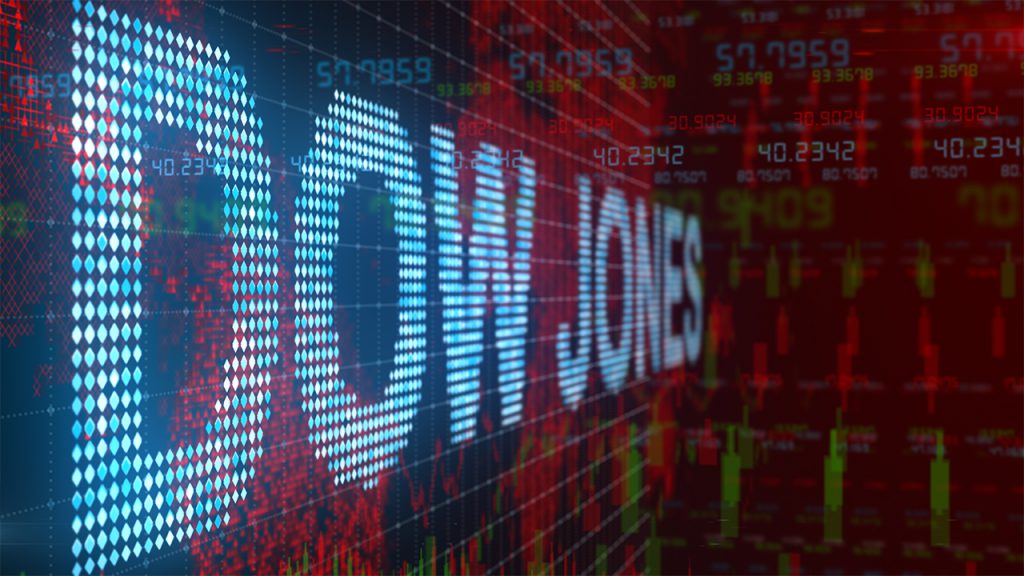 Global Financial Data has added 67 years of data and over 13,000 daily data points to the Dow Jones Transportation Average. GFD’s version of the average now begins in 1832 and provides daily data covering 185 years.
The Dow Jones Transportation Average was introduced on September 23, 1889 and included 18 railroad stocks and 2 industrial stocks. On October 26, 1896, the two industrial stocks were removed from the railroad average when Dow Jones started calculating the Dow Jones Industrial Average with 12 industrial stocks. The Dow Jones Railroad Average included 20 stocks.
Although the NYSE was closed between July 31, 1914 and December 12, 1914, GFD has collected data on the bid and ask prices for DJTA components while the NYSE was closed and has recalculated the average during the period when the exchange was closed.
On January 2, 1970, the Dow Jones Railroad Average was renamed the Dow Jones Transportation Average and 9 of the railroad stocks were replaced with 9 airline and trucking companies to reflect the changes that occurred after World War II.
Today, the Dow Jones Transportation Average is the longest continually calculated stock market index in the world. Now, GFD has added over 13,000 observations to the average before September 23, 1889 to create the world’s only index providing daily data on 185 years of market history.
To put this data together, GFD found the top 40 railroads by capitalization each year from 1832 to 1889. Then GFD determined which of those 40 stocks had the greatest number of observations in each year and used that information to choose the 25 stocks for GFD’s railroad average. We then spliced our own calculations before 1889 onto the Dow Jones Transportation Average to create a continuous series. GFD has also calculated a return index that includes the reinvestment of dividends.
A graph of the complete Dow Jones Transportation Average including GFD’s extension, from 1832 to 1899 is reproduced below. Anyone interested in following the market cycles that occurred in the U.S. stock market before 1889 can now track these changes on a daily basis.
If you would like view this data, you can download the Dow Jones Transportation Average (with GFD extension) (_DJT3D) today, or call Global Financial Data today to speak to one of our sales representatives at 877-DATA-999 or 949-542-4200 and gain access to this data through a subscription.
Global Financial Data has added 67 years of data and over 13,000 daily data points to the Dow Jones Transportation Average. GFD’s version of the average now begins in 1832 and provides daily data covering 185 years.
The Dow Jones Transportation Average was introduced on September 23, 1889 and included 18 railroad stocks and 2 industrial stocks. On October 26, 1896, the two industrial stocks were removed from the railroad average when Dow Jones started calculating the Dow Jones Industrial Average with 12 industrial stocks. The Dow Jones Railroad Average included 20 stocks.
Although the NYSE was closed between July 31, 1914 and December 12, 1914, GFD has collected data on the bid and ask prices for DJTA components while the NYSE was closed and has recalculated the average during the period when the exchange was closed.
On January 2, 1970, the Dow Jones Railroad Average was renamed the Dow Jones Transportation Average and 9 of the railroad stocks were replaced with 9 airline and trucking companies to reflect the changes that occurred after World War II.
Today, the Dow Jones Transportation Average is the longest continually calculated stock market index in the world. Now, GFD has added over 13,000 observations to the average before September 23, 1889 to create the world’s only index providing daily data on 185 years of market history.
To put this data together, GFD found the top 40 railroads by capitalization each year from 1832 to 1889. Then GFD determined which of those 40 stocks had the greatest number of observations in each year and used that information to choose the 25 stocks for GFD’s railroad average. We then spliced our own calculations before 1889 onto the Dow Jones Transportation Average to create a continuous series. GFD has also calculated a return index that includes the reinvestment of dividends.
A graph of the complete Dow Jones Transportation Average including GFD’s extension, from 1832 to 1899 is reproduced below. Anyone interested in following the market cycles that occurred in the U.S. stock market before 1889 can now track these changes on a daily basis.
If you would like view this data, you can download the Dow Jones Transportation Average (with GFD extension) (_DJT3D) today, or call Global Financial Data today to speak to one of our sales representatives at 877-DATA-999 or 949-542-4200 and gain access to this data through a subscription.
 Global Financial data has added 180 market cap country indices to its GFD Indices. The indices cover 90 countries with one index providing both data on the total market cap of that country in US Dollars with the number of companies that are included in the calculations, and a second index showing total market cap of that country as a percentage of the global total. Country classification is based upon which country the firm operated in.
Global Financial Data has information on 75,000 companies that listed in the United States, United Kingdom, Canada and other countries. Before World War I, companies from every country in the world listed on the London Stock Exchange and the UK Stocks Database includes data on thousands of foreign companies. GFD has aggregated this data to generate these indices.
Companies from most of the emerging markets listed in London in the 1800s because there was no domestic stock exchange in those countries. Companies from Argentina, Brazil, Australia, South Africa and other emerging markets raised capital in London, not on their domestic markets. After World War I, restrictions on listing in London caused companies to list in New York.
Until now, no record of the market cap of all these companies existed. With the creation of these indices, you can find the monthly market cap of companies from emerging markets that listed in London back to 1825 when the number of emerging market companies in London exploded. Today, virtually every international company has an ADR listed either on the NYSE or over-the-county. Between New York and London a good overview of global market capitalization is available.
GFD is in the process of calculating stock market price and return indices for these emerging markets and will make them available later this year.
List of market cap country indices
If you would like to have a list of these new indices and access to them, call Global Financial Data today to speak to one of our sales representatives at 877-DATA-999 or 949-542-4200.
Global Financial data has added 180 market cap country indices to its GFD Indices. The indices cover 90 countries with one index providing both data on the total market cap of that country in US Dollars with the number of companies that are included in the calculations, and a second index showing total market cap of that country as a percentage of the global total. Country classification is based upon which country the firm operated in.
Global Financial Data has information on 75,000 companies that listed in the United States, United Kingdom, Canada and other countries. Before World War I, companies from every country in the world listed on the London Stock Exchange and the UK Stocks Database includes data on thousands of foreign companies. GFD has aggregated this data to generate these indices.
Companies from most of the emerging markets listed in London in the 1800s because there was no domestic stock exchange in those countries. Companies from Argentina, Brazil, Australia, South Africa and other emerging markets raised capital in London, not on their domestic markets. After World War I, restrictions on listing in London caused companies to list in New York.
Until now, no record of the market cap of all these companies existed. With the creation of these indices, you can find the monthly market cap of companies from emerging markets that listed in London back to 1825 when the number of emerging market companies in London exploded. Today, virtually every international company has an ADR listed either on the NYSE or over-the-county. Between New York and London a good overview of global market capitalization is available.
GFD is in the process of calculating stock market price and return indices for these emerging markets and will make them available later this year.
List of market cap country indices
If you would like to have a list of these new indices and access to them, call Global Financial Data today to speak to one of our sales representatives at 877-DATA-999 or 949-542-4200.
 Although, few people may realize it, we may be seeing the first generation of kids that will not need to know how to drive a car. With all the changes that are going on in the automobile industry, this is a distinct possibility. Not since the introduction of cars over 100 years ago has the automobile industry gone through so many changes so quickly. Between electric cars and self-driving cars, automobiles as we know them may not even exist 20 years from now.
Although, few people may realize it, we may be seeing the first generation of kids that will not need to know how to drive a car. With all the changes that are going on in the automobile industry, this is a distinct possibility. Not since the introduction of cars over 100 years ago has the automobile industry gone through so many changes so quickly. Between electric cars and self-driving cars, automobiles as we know them may not even exist 20 years from now.
The Birth of the Automobile
What was it like in the beginning? What type of companies were born when automobiles were introduced over 100 years ago? When we looked back at the first automobile companies that issued stock in the United States, we found an unexpected surprise, all of the first automobile companies that issued stock in the 1800s were electric automobile companies! Gasoline-powered cars didn’t appear until the 1900s. Tesla is bringing back an old tradition, not introducing a revolutionary change. The first automobile companies to issue stock raised their money at the end of the 1800s. The General Electric Automobile Co. issued stock in 1898, the Electric Vehicle Co., the New England Electric Vehicle Transportation Co. and the Pennsylvania Electric Vehicle Co. issued stock in 1899. In fact, electric autos outsold steam and gasoline-powered cars in 1899 and in 1900. Although we may not realize it, electric automobiles were the preferred means of transportation in the first decade of automobiles. Not only were electric ca
It wasn’t for a lack of ambition that the electric car failed. The New England Electric Vehicle Transportation Co. not only produced electric automobiles but provided a taxi service in Boston; however, the company only lasted from 1899 to 1901. The American Electric Vehicle Co. started out in Chicago, produced eleven different automobiles (see the ad above), and moved to New Jersey to be closer to wealthy customers, but failed in 1902.
It wasn’t for a lack of ambition. The Electric Vehicle Co. was founded in 1897 and as other electric vehicle manufacturers went bankrupt, it took over their factories. The company took control of the Motor Vehicle Co. of Elizabeth, NJ, the Pope Manufacturing Co., the Columbia Automobile Co. and the Columbia Electric Vehicle Co. of Hartford, NJ, but went into receivership on December 10, 1907. The company issued over $10 million in common stock, over $8 million in preferred and paid 8% in dividends on the common and preferred in 1899, but as profits failed to materialize, the stock price collapsed.
The Rebirth of the Electric Car
With the rising price of oil in the 2000s and the demand for a more environmentally-friendly automobile, every auto company is striving to create an electric car that can replace gasoline-powered vehicles. Today, electric cars and self-driving cars appear to be the wave of the future. Tesla as a company is worth almost as much as General Motors even though it produces a fraction of the number of cars General Motors produces. Tesla is now producing its Model 3 in an attempt to produce an affordable electric vehicle that the average person can afford. Will Tesla succeed, or will Tesla go the way of the earliest electric car companies ending up in bankruptcy? Only time will tell. Global Financial Data has added the most extensive collection of data on sector market caps available anywhere.Global Financial Data divides the stock market into twelve sectors. The 12 sectors include 11 sectors similar to the 11 sectors in the GICS, but adds a twelfth sector for Transportation stocks since these were historically important to the US, UK and other economies. The Communications sector includes not only Telecommunications stocks, but general communications such as Media and Publishing. The Real Estate sector is separated from the Financial Sector throughout its history.
The indices provide both total market cap and market cap as a percentage of the total. Using GFD’s capitalization tool, you can generate pie charts for any individual year, and you can generate a stacked chart over time which show how the composition of the sectors changed over time.
Monthly sector indices have been created for:
Global Financial Data has added the most extensive collection of data on sector market caps available anywhere.Global Financial Data divides the stock market into twelve sectors. The 12 sectors include 11 sectors similar to the 11 sectors in the GICS, but adds a twelfth sector for Transportation stocks since these were historically important to the US, UK and other economies. The Communications sector includes not only Telecommunications stocks, but general communications such as Media and Publishing. The Real Estate sector is separated from the Financial Sector throughout its history.
The indices provide both total market cap and market cap as a percentage of the total. Using GFD’s capitalization tool, you can generate pie charts for any individual year, and you can generate a stacked chart over time which show how the composition of the sectors changed over time.
Monthly sector indices have been created for:
- The S&P Composite back to 1925 (90 stocks to 1957 and 500 thereafter)
- United States companies listed in the United States back to 1801
- All companies listed on United States exchanges back to 1801
- United Kingdom companies listed in London back to 1694
- All companies listed on the London stock Exchange back to 1693
- All companies listed in the US, UK and other countries that are in the GFD Microverse back to 1692


